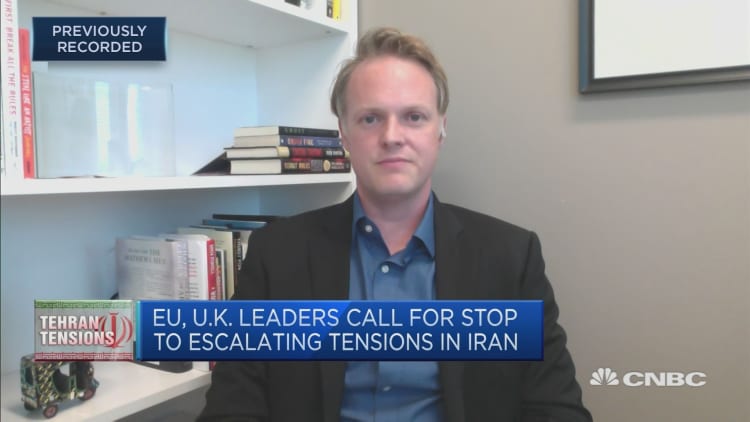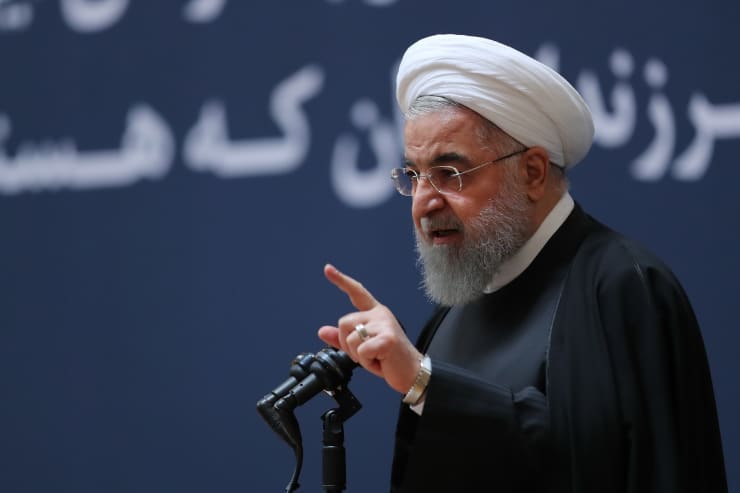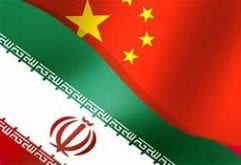CNBC – Tehran faces rising food prices and food shortages.
Iran’s government is running out of options to help stem the costs.
A local cook estimates prices have increased by 50% to 100% in the last year.
The cost of beef has gone from 380,000 rials a kilo three months ago to nearly 1.2 million rials per kilo, pricing out many families.

In this Thursday, Sept. 6, 2018, photo, people walk through the Grand Bazaar where Chinese-made goods have flooded the market, in Tehran, Iran.
As U.S. sanctions on Iran extend into a second year, Iranian citizens are paying the price with skyrocketing costs and food shortages.
Jafar Ghaffari, a cook in Tehran, is one of the many Iranians struggling to keep up with the rising cost of food. He says prices have increased by 50% to 100% in the last year.
Ghaffari says his weekly shopping trip, which cost him 7 million rials [$50] just three months ago, now costs him 14 million rials ($100) a week, nearly half the average Iranian’s salary.
The constant price increases have caused instability for families trying to budget for rent and food. Profiteers pump up prices, and consumers rush to stock up before the next price hike. “Nothing is certain. You’ll see something [priced at] 220,000 rials, and tomorrow [it’s] 300,000 rials,” Ghaffari said.
It has been over a year since President Donald Trump pulled out of the Joint Comprehensive Plan of Action, the nuclear accord designed to keep Iran from developing a nuclear weapon, leaving Germany, France and the United Kingdom to attempt to uphold the agreement with Iran.
The Trump administration also imposed a number of sanctions that have focused on targeting Iran’s economy by cutting off its oil revenue and ability to trade with Europe and Asia. Currently, Iran’s oil exports have dropped from 2.5 million barrels a day to about 500,000 barrels a day due to the pressure from sanctions, according to Tanker Trackers data.
Monthly salary of $220
Unable to realize the economic benefits of the nuclear deal, Iran is facing high inflation, a devalued currency and an economy that the International Monetary Fund predicts will shrink by 6% this year. The Iranian government has found its hands tied as prices on foods climb higher, pricing out the population, whose average monthly salary of 32 million rials equals only $220.
In 2018, the rial lost nearly 60% of its value. With less buying power (the exchange rate for the dollar on the free market is 145,000 rials), Iranians are finding they can’t stretch their paychecks anymore.

Getty Images
Younes Ali, a shopkeeper in one of Tehran’s affluent neighborhoods, said he’s raised prices on everything from milk and pasta to canned tuna. Tuna prices have gone from 25,000 rials to 190,000 rials, while the price of pasta has gone from between 18,000 and 25,000 to nearly 60,000 rials.
One reason for the increases: import prices. Tuna cans are assembled abroad, and the material is expensive. Ali said he’s lucky, as he still gets business; others down the street have been forced to shut their shops and leave Tehran.
Over the past year, the government has tried to tackle the problem through subsidies and price regulation. But years of economic mismanagement by the government have left Iranians skeptical of the new tactics.

In an effort to regulate prices, the government sets the price on a product, most recently sugar, and distributes it into supermarkets. The influx of product should, in theory, drive prices lower. Ghaffari, however, says this system isn’t working.
“As soon as people hear about a store that is going to receive a government shipment they form a line,” Ghaffari said. “It could take 10 hours, and you may not even get the sugar, because they’ve run out. It’s frustrating.”
Sugar is available on the free market but at a high price. The regulated price for sugar ranges from 38,000 to 40,000 rials but, on the free market, sugar costs between 100,000 and 180,000 rials. Ali said his prices start at about 100,000 rials for a 900-gram pack but he encourages people to buy right away. “Of course it is expensive, but tomorrow it will go up again.”

Iranian President Hassan Rouhani makes a speech during a ceremony in Tehran, Iran on January 10, 2019.Anadolu Agency | Anadolu Agency | Getty Images
Iranians blame the government, sanctions, and businesses for buying in bulk, storing up in case of shortages of key products. But those businesses aren’t immune from the troubles facing the country.
Easier to close their doors
One bakery owner, who asked not to be named due to the risk to her business, said the price hikes have caused a myriad of problems. Fear of shortages has caused her to stock up, but much of what she needs can’t be stored long term. The extra costs have affected her margins.
Factories that make baking essentials have run out of raw ingredients and some have either stopped manufacturing altogether or sell products at an inflated price off the books. The government has tried to step in and force manufacturers to sell, but there is little upside for those factories to pay workers and sell goods below their cost. It’s cheaper to shutter their doors.
From September 2018 to May 2019, the bakery has seen the cost of flour go from 680,000 rials to 1.5 million rials. The cost of ingredients has forced the owner to raise prices, a move she’s tried to avoid. Although the sales are decent, with so much extra cost going into creating products, the store has struggled to make a profit.
In an effort to save, some families have stopped buying luxury items such as sugar. But, both Ghaffari and Ali point out that many families have also stopped buying meat, a staple in Iranian dishes. Some of the highest price increases are in the meat market, where profiteering is at a high, prompting local newspapers to call for a crackdown.
The cost of beef has gone from 380,000 rials a kilo three months ago to nearly 1.2 million rials per kilo, pricing out many families. Efforts by the government to subsidize the meat market or import frozen meat have fallen flat, causing “indignities for families” and prompting some to leave Tehran, Ghaffari said.
Subsidizing dollar purchases
Iran’s central bank has offered the U.S. dollar at a subsidized rate for importers of essential goods such as pharmaceuticals, meat and wheat, spending nearly $25 billion on the program last year. Importers who qualified for subsidies would be offered the government exchange rate of 42,000 rials to the dollar, a fraction of the rate on the free market.
Esfandyar Batmanghelidj, the founder of media company Bourse & Bazaar, said, “The problem with providing subsidized foreign currency is that even if this helps importers keep prices lower, it creates other disruptions in the market which still push prices higher.” Batmanghelidj said he has seen some importers seek allocations, only to then sell the currency back at the free-market price, pocketing the profits and driving prices up.
Unable to continue the subsidies, the central bank governor marked the program a failure earlier this year, saying, “Allocating subsidized currency to essential goods has failed to prevent their price hikes … due to the nature of the market in the economy and the weakness of the distribution and supervision systems.”
Batmanghelidj said he doesn’t think an end to the subsidization program is a bad thing. “The elimination of the subsidy, although [it] will raise the cost for importers and the consumer, unifying the exchange rate would eliminate the space for corruption and profiteering,” he said.
As tensions continue to escalate between the U.S. and Iran, options may be running out. The rising prices aren’t letting up, and for average Iranians, it’s becoming harder than ever to provide for their families.
 Shabtabnews In this dark night, I have lost my way – Arise from a corner, oh you the star of guidance.
Shabtabnews In this dark night, I have lost my way – Arise from a corner, oh you the star of guidance.


